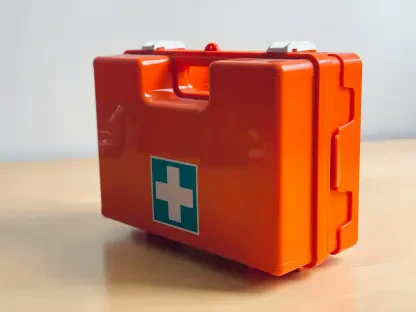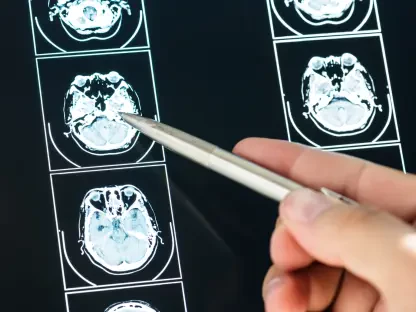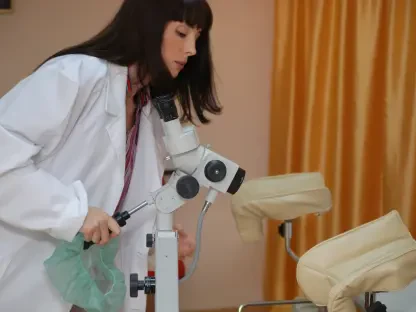In a landmark move to combat infant mortality on a global scale, the World Health Organization (WHO) has introduced pioneering guidelines aimed at transforming the diagnosis of bacterial infections in newborns. Announced on August 7, this initiative targets infants aged 0 to 59 months, with a particular focus on sepsis, a condition responsible for 15% of the estimated 2.3 million neonatal deaths each year. The urgency of addressing this crisis is evident, as many of these deaths are preventable with timely and accurate detection. Current diagnostic methods often fail to meet the needs of the most vulnerable, especially in under-resourced regions where access to advanced medical tools is limited. The WHO’s new framework seeks to bridge this gap by setting clear standards for rapid, reliable, and accessible testing. This development marks a significant step forward in global health, emphasizing the protection of infants who face life-threatening infections in their earliest days. By prioritizing innovation and equity, the organization aims to ensure that geography or economic constraints do not determine a child’s chance of survival. This announcement signals a renewed commitment to reducing preventable deaths and improving neonatal care worldwide.
Tackling a Silent Killer in Neonatal Care
The WHO’s latest guidelines are a direct response to the staggering toll of sepsis and other bacterial infections among newborns, particularly in regions with limited healthcare infrastructure. Sepsis alone contributes to hundreds of thousands of deaths annually, often because symptoms are difficult to identify in infants and progress rapidly without intervention. The organization estimates that 84% of these fatalities could be avoided with early diagnosis and appropriate treatment. This sobering statistic underscores the critical need for better tools that can detect infections swiftly and accurately. Unlike many health challenges, neonatal sepsis disproportionately affects low- and middle-income countries (LMICs), where diagnostic capabilities are often rudimentary. The WHO’s focus is not only on saving lives in the immediate term but also on building a foundation for sustainable improvements in infant health outcomes across diverse settings.
A key aspect of this initiative is addressing the systemic barriers that hinder effective diagnosis in vulnerable populations. Traditional methods, such as blood cultures, are not only slow—often taking days to produce results—but also require blood volumes that are impractical for newborns, especially those born prematurely or critically ill. These limitations can delay life-saving treatments, with devastating consequences. The WHO’s guidelines outline a vision for diagnostic tools that overcome these obstacles by prioritizing speed, precision, and minimal invasiveness. By doing so, the organization aims to empower healthcare providers, even in remote or underfunded facilities, to make informed decisions without the burden of outdated technology. This approach represents a paradigm shift in how neonatal infections are managed on a global scale.
Redefining Diagnostic Standards for Infants
Central to the WHO’s guidance is the introduction of a target product profile (TPP) that sets rigorous standards for new diagnostic tests. This profile specifies that tests must deliver results in under 30 minutes, achieve a sensitivity of 90% or higher, and require less than 100 microliters of blood—a fraction of what current methods demand. These criteria are designed to ensure that healthcare workers can identify infections swiftly without compromising the safety or comfort of infant patients. Such rapid turnaround times are crucial in emergency situations where every moment counts, particularly for conditions like sepsis that can escalate quickly. The emphasis on high sensitivity also means fewer missed diagnoses, reducing the risk of untreated infections that could prove fatal.
Beyond technical specifications, the TPP also addresses the practical challenges of implementing these tools in real-world settings. Many existing diagnostics are not only ineffective for infants but also require specialized equipment and trained personnel, resources often unavailable in LMICs. The WHO’s guidelines push for simplicity in test design, ensuring they can be administered by staff with minimal training. This focus on usability aims to democratize access to life-saving technology, making it feasible for rural clinics and understaffed hospitals to adopt these innovations. Additionally, by curbing the need for excessive antibiotic use through accurate diagnosis, the initiative tackles the growing threat of antimicrobial resistance, a pressing concern in global health. This multifaceted strategy highlights the comprehensive nature of the WHO’s vision for neonatal care.
Overcoming Barriers in Resource-Limited Environments
A cornerstone of the WHO’s approach is ensuring that new diagnostic tools are tailored to the unique challenges faced by LMICs, where the burden of neonatal infections is most severe. In many of these regions, healthcare facilities lack the infrastructure for complex laboratory testing, often relying on clinical assessments that can be imprecise and lead to misdiagnosis. The guidelines call for tests that are not only effective but also portable and easy to use, enabling deployment in remote or underserved areas. Affordability is another critical factor, as many health systems in these countries operate on tight budgets. The WHO’s insistence on cost-effective solutions aims to prevent financial barriers from limiting access to essential diagnostics, ensuring that even the most marginalized communities can benefit.
The disparity in healthcare access between high-income and low-income regions is a longstanding issue, and the WHO’s initiative seeks to address this inequity head-on. By setting standards that prioritize practicality and low cost, the organization hopes to inspire the development of tools that can be widely distributed without straining local resources. This is particularly vital in areas where neonatal mortality rates are highest, and the lack of reliable diagnostics exacerbates the problem. The guidelines also encourage partnerships between governments, nonprofits, and private sectors to facilitate the production and distribution of these tests. Such collaboration is essential for scaling up access and ensuring that innovations do not remain confined to wealthier nations but reach the infants who need them most, regardless of their location.
Fostering Global Innovation and Partnership
The release of these guidelines serves as a powerful catalyst for innovation, urging manufacturers, researchers, and health regulators to unite in developing diagnostic tools that meet the WHO’s stringent criteria. This call to action is not merely about creating new technology but about ensuring it aligns with the urgent needs of infant care worldwide. By providing a clear roadmap through the TPP, the WHO offers a blueprint for progress, encouraging stakeholders to focus on solutions that are both cutting-edge and practical. The potential impact is immense, as effective diagnostics could transform clinical decision-making, reduce unnecessary treatments, and save countless lives. This collaborative effort is a reminder of the importance of shared responsibility in addressing global health challenges.
Equally important is the role of international cooperation in turning these guidelines into tangible outcomes. The WHO’s framework is designed to spur investment in research and development, particularly for technologies that cater to the constraints of LMICs. Partnerships between public health bodies and private industry can accelerate the production of affordable, high-quality tests, ensuring they reach the market swiftly. Moreover, the guidelines emphasize the need for regulatory support to streamline approval processes, preventing delays that could hinder access. This holistic approach reflects an understanding that innovation alone is not enough; it must be accompanied by systems that facilitate implementation. As these efforts unfold, the global health community stands poised to witness a significant reduction in infant mortality linked to bacterial infections.
Building a Future of Health Equity for Newborns
Reflecting on the strides made with the announcement on August 7, the WHO’s commitment to improving neonatal diagnostics emerged as a beacon of hope for millions of families worldwide. The meticulous standards set forth in the target product profile addressed critical flaws in existing methods, paving the way for tools that could deliver rapid, accurate results even in the most challenging environments. This initiative also shone a light on the stark disparities in healthcare access, particularly for infants in LMICs, and took decisive steps to close those gaps through a focus on affordability and simplicity.
Looking ahead, the next steps involve sustained collaboration among global health stakeholders to bring these guidelines to fruition. Governments and health organizations must prioritize funding and policy support to ensure that innovative diagnostics are not just developed but also widely adopted. Manufacturers should seize this opportunity to create solutions that align with the WHO’s vision, while local health systems prepare to integrate these tools into routine care. Continuous monitoring and evaluation will be essential to assess the impact of these tests on neonatal outcomes and adjust strategies as needed. By maintaining this momentum, the global community can build on this foundation, ensuring that every infant, regardless of where they are born, has a fighting chance against life-threatening infections.









